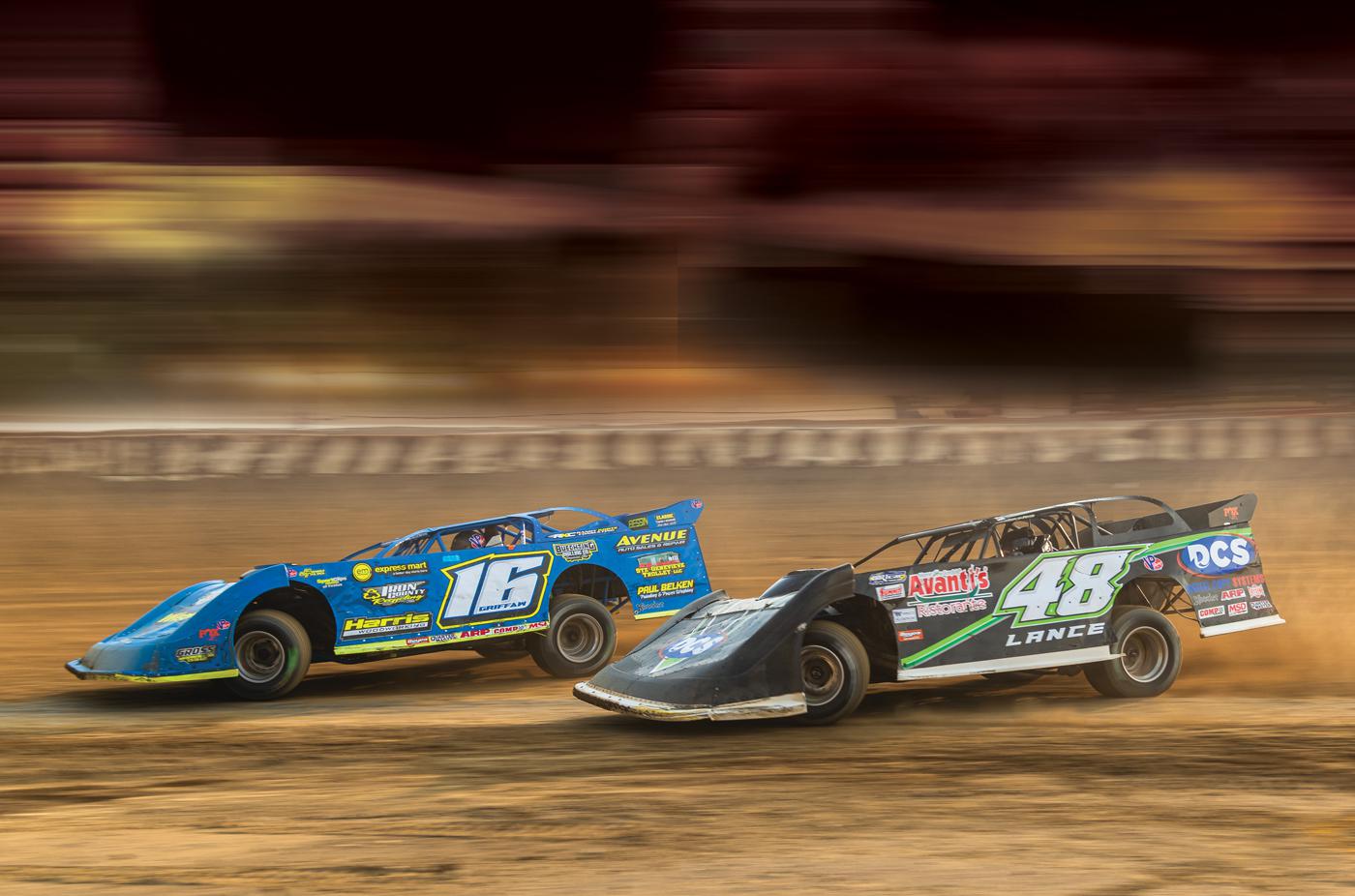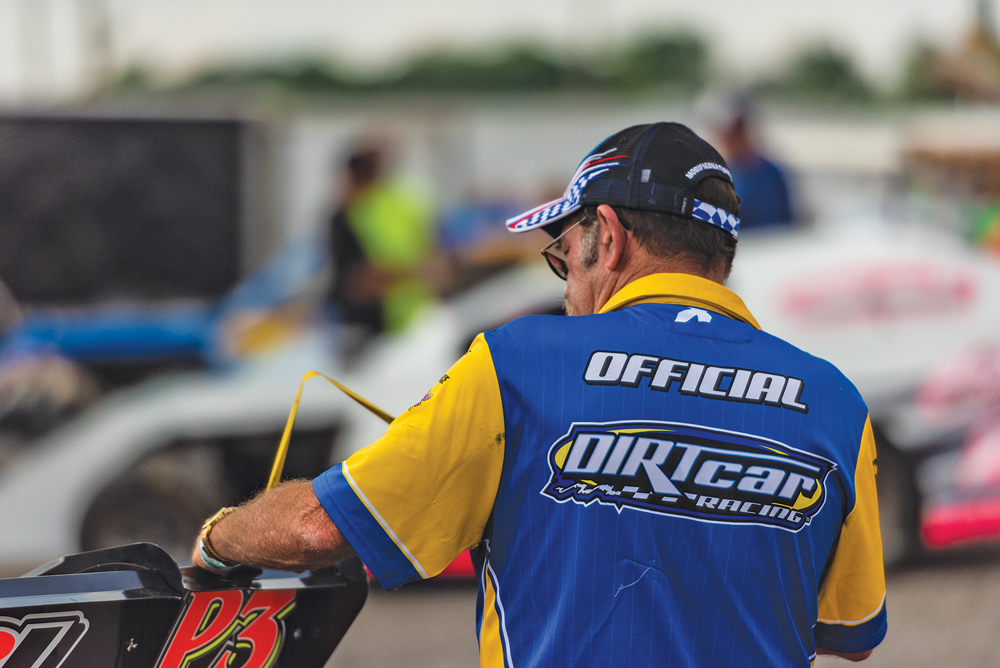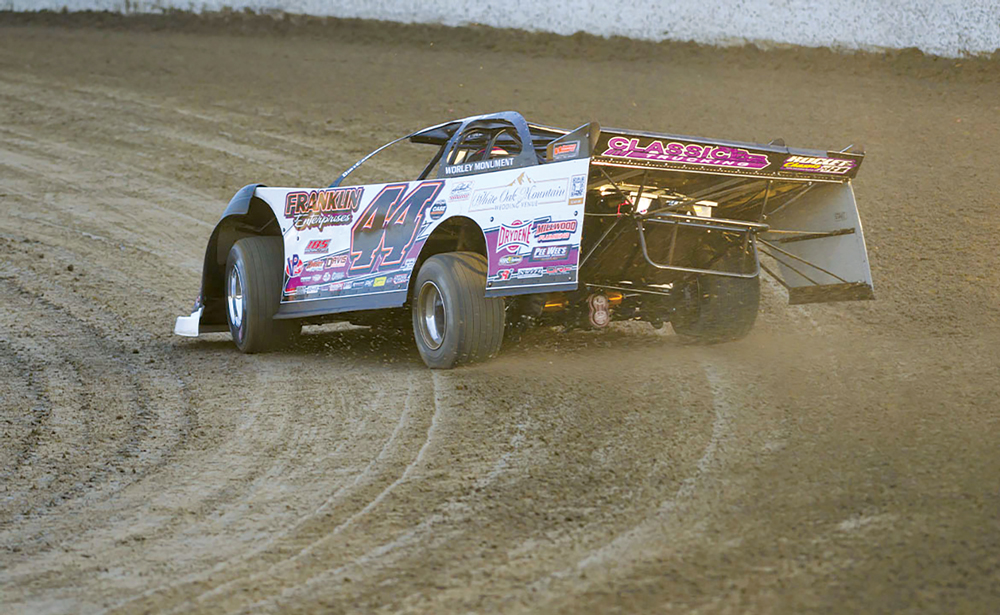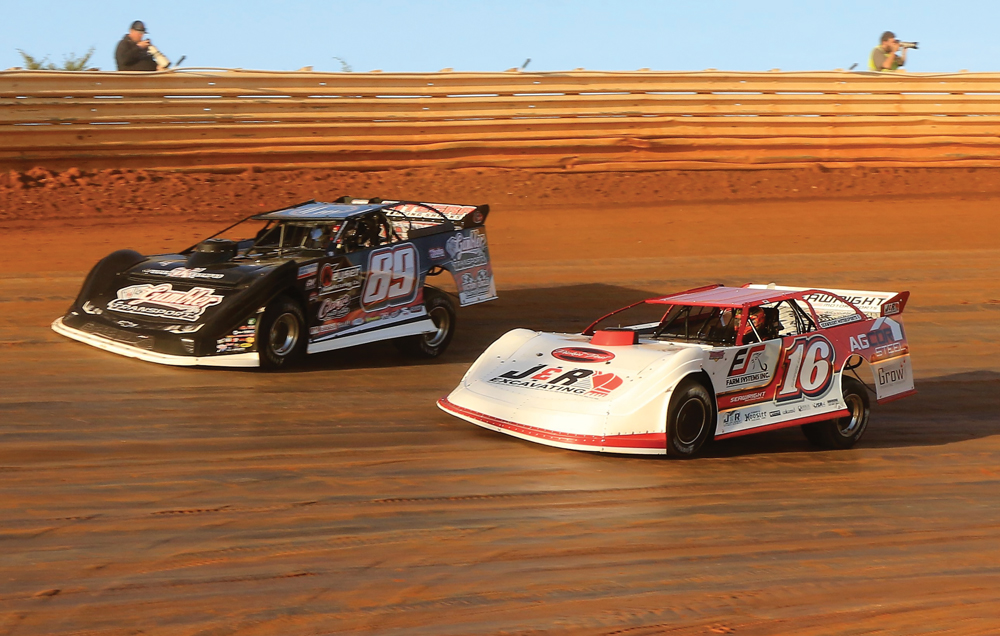Signing Off On The Setup

Initially a point of contention for some dirt late model racers, the “droop rule” gets updates for 2023 and puts the major series on the same page while preserving creativity and competition.
Across the vast motorsports spectrum, builders and racers have historically grappled with rules changes designed to help even out competition or improve safety, or sometimes to correct problems caused by previous rules changes. It’s all part of the racing landscape. And almost universally, racers can be resistant to change, often due to confusion over a new rule or the cost to meet it. The “droop rule” in dirt late model (DLM) racing was no exception.
Cutting to the most important point, the droop rule remains part of the 2023 Unified Dirt Late Model Construction Rules meant to get all DLM series on the same page. The rule had been a part of the 2022 Unified Rules, but in September 2022, it looked like one tour, the XR Super Series, was going to drop it. In fact, that did occur, but only for two races: Kokomo and Las Vegas.
A significant change to the 2023 droop rule implementation brought XR back to using it, according to event director Bucky Doren. We’ll explain in a moment.

First, those not versed in the often deceptively complex workings of dirt late model chassis construction and aerodynamics might well wonder why the bodies tilt (or “droop”) rightward and move the chassis geometry sideways when the cars enter the track. It’s a design feature that pushes the left rear deck spoiler higher into the air to generate added downforce. Prior to the rule, cars were pushing their left rear corners 58 inches into the air. The post-race inspection called for 39-inch rear deck height as measured at the center, and drivers were known to stand on the cars to compress the suspension long enough to pass through.
How much benefit the high left deck height provided depended on where a driver was in the pack. A car following the leader closely might lose downforce, because the front car was blocking the air. Some believed, as well, that the setup could turn a minor bump from a competitor into a major rollover mid-apex.
Did Limiting Droop Dampen Competition?
By most accounts, the “droop rule” first appeared in the Southern Nationals races promoted by Ray Cook at the start of the 2018 season to limit vertical travel of the left rear suspension. The rule required DLM cars to have a chain connecting a collar or bearing-type mount on the left rear axle tube to a mount on the left rear frame directly above it.
Because the droop rule was not universal across series, some racers built different cars for each, an expensive proposition not all could afford. The 2022 Unified DLM Construction Rules were meant to address that concern.
Steve Francis, current director for the World of Outlaws Late Model Series, affirmed his support for the rule but admitted he was not initially a fan of it. Francis had retired from a stellar 35-year racing career in 2017 after achieving nearly 300 victories, then at first became technical director for the Lucas Oil Late Model Dirt Series. He told PRI that he does not believe increased rollover potential was the biggest driver in adopting the droop rule.
“The whole idea was to get the rear spoiler out of the air some,” he said. “We’d gotten to the point where the guy that could figure out how to get his car the highest in the air would win the race. Naturally, with a car 58 inches in the air versus 51 or 50 inches, there is a difference in how easy it is to roll that car over, but I’d say the biggest thing is allowing the car behind it to be able to get air on it.”

In response to numerous racer arguments and complaints over the droop rule, Francis initiated dialogue with other series in late 2021. At the PRI Trade Show that December, Francis, Kenny Kenneda from World of Outlaws, and officials from other series hammered out what became the 2022 Unified Dirt Late Model Construction Rules. Among these was the Rear Travel Limiter Rule, a.k.a. “droop rule.”
That version of the rule specified post-race left rear deck height not higher than 51 inches, checked with both tires just off the ground to let a .040-inch shim slip beneath them. Violation called for a disqualification. Those two elements would become sticking points for Doren at XR Super Series, leading to his fall 2022 attempt to drop the rule.
Overcoming Obstacles
“The biggest issue that we had behind the scenes in 2022 was that the right rear wheel had to be off the ground at inspection,” Doren told PRI. “We started the season with it, but by mid-season, we felt we would try dropping it to gauge driver reaction, and to evaluate the competition.”
For the two races where XR dropped the rule, Doren said it appeared to help the competition somewhat. “Driver feedback was mixed,” he said, “but most said to keep it so that they didn’t have to build two cars. So, the biggest reasons we agreed to go back to the droop rule were that the right rear wheel was no longer a factor, and it would not encourage racers to build two cars.”
Doren was also concerned that the droop rule, as implemented last year, could have limited racers’ ingenuity and dampened fan enthusiasm. “We want to make sure that these teams can still be creative with their setups,” he said. “They’re still finding ways to get around it, regardless, but that mystery is also part of the fun for the fans. If somebody goes too far, it’s an infraction, but now it’s a position penalty, not a DQ as in 2022.”
Working for Racers
Francis sees wide adoption of the droop rule as beneficial to dirt late model racers, starting with reducing chassis complexity. “There are still arguments over the droop rule, but it’s maybe a third of what it used to be,” he said. “Before, you’d have to have an engineer trying to figure out how to get the car higher in the air. As you pull them all back down, it’s less technical. It has allowed racers to get out of the very complicated stacks in the springs and things like that. Now, there’s a lot of conventional single springs being raced.”

Francis told PRI he believes the droop rule still allows room for creativity and exciting competition. “I feel like the current version of the rule and the current tire rules, where race teams have choices, have made dirt late model racing much better,” he said. He cited “really good racing” at the start of the season, with plenty of passing and lead changes.
“We had a guy at Volusia who started around 23rd and won in a 50-lap race,” Francis said. “I think that speaks well for the sport right now and where the rules packages are.”
SOURCES
World of Outlaws Late Model Series
worldofoutlaws.com/latemodels
XR Super Series
xrsuperseries.com
 MEMBERSHIP LOGIN
MEMBERSHIP LOGIN JOIN PRI
JOIN PRI


